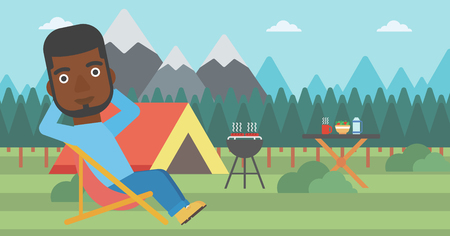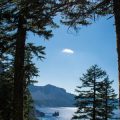1. Choosing the Right National Forest with Lake Access
Planning a camping trip in a national forest with lake access can be one of the most rewarding outdoor experiences in the U.S. But with so many options across the country, how do you choose the perfect spot? Here’s how to narrow it down and pick a location that fits your style, interests, and comfort level.
Research Lake Conditions
Not all lakes are created equal—some are great for swimming, others for fishing or kayaking. Before choosing a destination, check out the size of the lake, water quality reports, seasonal water levels, and whether motorized boats are allowed. A quick search on the U.S. Forest Service website or recreation.gov can give you detailed info about lake conditions.
Check Accessibility
Make sure the forest and lake you’re eyeing are accessible by your vehicle type. Some areas require high-clearance or 4WD vehicles, while others have paved roads right up to the campsite. Also, consider how far you’re willing to drive from home or from major highways.
Know What Activities Are Permitted
Different national forests have different rules. Some allow swimming and paddleboarding but restrict fishing without a permit. Others may have designated zones for boating or campfires. Be sure to check what activities are allowed at your chosen spot before heading out.
Common Lake Activities and Availability
| Activity | Usually Allowed? | Permit Needed? |
|---|---|---|
| Swimming | Yes (in designated areas) | No |
| Fishing | Yes | Yes (state license) |
| Kayaking/Canoeing | Yes | No |
| Motorized Boating | Varies by lake | Sometimes |
Look Into Local Attractions
A lakefront view is amazing, but nearby attractions can make your trip even better. Look for hiking trails, scenic drives, waterfalls, wildlife viewing spots, or even small towns with local charm. These extras turn a good trip into a great one.
Pro Tip:
If youre traveling during peak season (especially summer), make reservations early. Popular national forests like those in Colorado, California, or Oregon fill up fast—especially ones with easy lake access.
By taking time to research these key factors ahead of time, youll set yourself up for an unforgettable camping experience in one of Americas beautiful national forests.
2. Essential Gear and Packing Tips for Lakefront Camping
Camping by a lake in a national forest is an incredible way to connect with nature, but it also requires smart packing and the right gear. Whether youre fishing at dawn or swimming in the afternoon, having the proper equipment can make or break your lakeside camping trip. Heres a practical checklist to help you pack like a pro.
Must-Have Camping Gear for Lake Environments
Lakeside camping comes with unique challenges and opportunities. Heres a breakdown of essentials you’ll want to bring along:
| Category | Essential Items | Why You Need It |
|---|---|---|
| Shelter & Sleeping | Tent with rainfly, ground tarp, sleeping bag (rated for temps), sleeping pad | Weather near lakes can shift quickly—be prepared for rain and damp ground. |
| Water Safety | Life jackets, dry bags, waterproof phone case | Important if youll be boating, kayaking, or swimming—safety first! |
| Cooking & Food Storage | Bear-proof cooler or food canister, portable stove, biodegradable soap | Lakes attract wildlife; keep food sealed and cooking areas clean. |
| Fishing Gear | Fishing rod, tackle box, bait/lures, valid fishing license (check state rules) | If you plan on fishing, make sure you’re equipped and legal. |
| Clothing & Footwear | Quick-dry clothes, water shoes, lightweight jacket, hat with brim | Stay comfortable and protected from sun and sudden weather changes. |
| Lighting & Navigation | Headlamp or flashlight, extra batteries, waterproof map or GPS device | Essential for getting around camp safely after dark or exploring trails. |
Packing Tips for Lakeside Comfort and Safety
Keep It Dry
Lakes mean moisture. Use dry bags for clothing and electronics. Pack an extra tarp to create a covered area for relaxing or storing gear during sudden showers.
Prep for Wildlife Encounters
Lakes often draw animals like raccoons and bears. Store all food and scented items in bear-proof containers or hang them using a bear bag system at least 100 feet from your tent.
Layer Your Clothing
Mornings by the lake can be chilly while afternoons may heat up fast. Pack layers so you can stay warm early on and peel off as temperatures rise throughout the day.
Create a Campsite Checklist
- Tent & sleeping setup fully waterproofed?
- Bags packed in waterproof containers?
- First-aid kit easily accessible?
- All food stored securely away from wildlife?
- Sunscreen and bug spray packed?
Pro Tip:
If you’re planning to swim or use boats/kayaks near your campsite, mark off areas clearly so everyone knows where its safe to enter the water. Always supervise kids closely around lakes—even shallow water can be dangerous without proper attention.
The right gear ensures that your lakefront experience in a national forest is not just scenic but also safe and enjoyable. Stay prepared and take advantage of everything lakeside camping has to offer!
![]()
3. Campground Etiquette and Regulations
When camping in national forests with lake access, its important to follow both official rules and the unspoken etiquette that helps everyone enjoy the great outdoors. Whether youre a first-time camper or a seasoned adventurer, knowing what’s expected can make your trip safer, more enjoyable, and respectful to nature and others.
Leave No Trace Principles
The Leave No Trace principles are the gold standard for outdoor ethics in the U.S. They’re not just guidelines—theyre a way of life for responsible campers. Here’s a quick overview:
| Principle | Description |
|---|---|
| Plan Ahead and Prepare | Know the area, bring proper gear, and check regulations before you go. |
| Travel and Camp on Durable Surfaces | Stick to trails and established campsites to avoid damaging fragile environments. |
| Dispose of Waste Properly | Pack out all trash, leftover food, and litter. Use designated restroom facilities if available. |
| Leave What You Find | Don’t take rocks, plants, or historical items. Let others experience them too. |
| Minimize Campfire Impact | Use fire rings where provided, keep fires small, and make sure they’re completely out before leaving. |
| Respect Wildlife | Observe animals from a distance and never feed them—it can harm them and you. |
| Be Considerate of Other Visitors | Keep noise levels down and respect other campers’ space and peace. |
Quiet Hours
Most campgrounds in national forests have designated quiet hours, typically between 10 PM and 6 AM. During this time, loud music, shouting, or running generators is discouraged or prohibited. It’s all about creating a peaceful environment where everyone can relax and get some rest under the stars.
Campfires and Fire Restrictions
Fire safety is critical when camping near forests or lakes. Depending on weather conditions and fire danger levels, there may be restrictions in place. Always check with the local ranger district or forest service website before lighting a campfire.
Common Fire Rules to Follow:
- Use existing fire rings if available.
- Keep fires small and manageable.
- Never leave a fire unattended.
- Drown the fire completely with water before going to sleep or leaving camp.
- If fire bans are active, use a portable stove instead of an open flame.
Other Important Regulations
Pets
Your furry friends are usually welcome in national forest campgrounds but must be kept on a leash no longer than six feet. Always clean up after your pet to keep campsites clean for everyone.
Alcohol Use
Alcohol is generally allowed unless posted otherwise. However, disruptive behavior caused by drinking is not tolerated and could result in fines or removal from the campground.
Campsite Limits
Many campgrounds limit how many people, tents, or vehicles can stay at one site. Check signage or ask a ranger if youre unsure. Overcrowding can damage natural areas and disturb nearby campers.
A little preparation goes a long way when it comes to following campground rules. By practicing good etiquette and respecting regulations, youll help protect our beautiful national forests—and make sure everyone has an amazing camping experience by the lake.
4. Top Activities to Enjoy by the Lake
Spending time by the lake during your national forest camping trip opens up tons of fun and relaxing outdoor activities. Whether youre looking for adventure, family bonding, or a peaceful moment with nature, there’s something for everyone. Here are some of the top lakefront activities you can enjoy:
Kayaking & Paddleboarding
If you love being on the water, kayaking and paddleboarding are must-try activities. These are great ways to explore calm lake waters while getting some light exercise. Many lakes in national forests have rental stations nearby, but bringing your own gear gives you more freedom.
Tips for Beginners:
- Start early in the morning when the water is calm.
- Wear a life vest at all times.
- Stick close to shore until youre comfortable.
Fishing
Fishing is a classic lake activity and a favorite among campers. National forest lakes are often stocked with fish like trout, bass, and perch. Make sure to check local fishing regulations and get a permit if needed.
Popular Fish Species by Region:
| Region | Common Fish |
|---|---|
| Pacific Northwest | Rainbow Trout, Chinook Salmon |
| Southeast | Largemouth Bass, Catfish |
| Northeast | Brook Trout, Smallmouth Bass |
| Midwest | Northern Pike, Walleye |
Swimming
A refreshing swim is the perfect way to cool off after a hike or just relax under the sun. Many lakes in national forests have designated swimming areas that are safe for families.
Safety Reminders:
- Swim only in marked areas.
- Never swim alone—use the buddy system.
- Watch out for sudden drop-offs or underwater obstacles.
Family-Friendly Fun
Lakeside camping is ideal for families with kids. Bring beach toys, floaties, and snacks for an easygoing day near the water. Skipping stones, building sandcastles, or just watching ducks go by can make lasting memories.
Easy Ideas for Kids:
- Nature scavenger hunt: Create a list of things to find like pinecones, feathers, or animal tracks.
- Telescope time: Stargazing by the lake at night can be magical.
- Mud painting: Use natural materials to make art on rocks or paper plates.
Nature Exploration Around the Lake
Lakeshores are full of wildlife and plant life waiting to be discovered. Bring binoculars for birdwatching or a nature guidebook to identify trees and flowers along the shoreline trails.
What You Might See:
| Wildlife | Description |
|---|---|
| Bald Eagles | Nesting near large lakes; look for them soaring above water. |
| Turtles | Basking on logs or rocks along the shore during sunny days. |
| Beavers | Dusk is a good time to spot these busy builders near dams. |
Lakeside adventures add so much fun and variety to your camping experience. Whether paddling through glassy waters or spotting wildlife from shore, there’s always something new to discover by the lake.
5. Wildlife Safety and Environmental Stewardship
When youre camping near lakes in national forests, youre stepping into the natural habitat of countless wild animals and delicate ecosystems. Being a respectful guest not only keeps you safe but also helps preserve these beautiful places for future generations.
Coexisting Safely with Wildlife
Wildlife encounters can be magical, but its important to remember that these animals are wild and should never be approached or fed. Heres how you can keep yourself and the animals safe:
| Do | Dont |
|---|---|
| Store food in bear-proof containers or hang it from a tree | Leave food out or in your tent |
| Keep a safe distance (at least 100 yards from bears, 25 yards from other wildlife) | Try to get close for photos or interaction |
| Make noise while hiking to avoid surprising animals | Walk quietly through brushy areas |
| Observe animals with binoculars or cameras with zoom lenses | Use flash photography at night |
Protecting Local Ecosystems
Lakeside environments are fragile. Whether youre swimming, fishing, or just setting up camp, small actions can make a big difference:
- Stick to established campsites: This prevents damage to new areas and reduces soil erosion.
- Avoid trampling vegetation: Walk on marked trails and avoid disturbing lake shorelines.
- Use biodegradable soap: If you wash dishes or yourself, do it at least 200 feet away from the lake.
- Follow local fire regulations: Wildfires can devastate ecosystems. Use a camp stove when fire danger is high.
Reducing Your Environmental Footprint
Caring for the land means leaving it better than you found it. Follow Leave No Trace principles to minimize your impact:
- Pack out all trash: Even food scraps can harm wildlife and pollute water sources.
- Bury human waste properly: Dig a cat hole 6-8 inches deep and at least 200 feet from water sources.
- Avoid single-use plastics: Bring reusable containers, utensils, and water bottles.
- Respect quiet hours: Noise pollution affects both wildlife and fellow campers.
Your Role as a Steward of Nature
Camping near lakes in national forests comes with a responsibility to care for the environment. Every little action counts—so whether youre picking up someone elses trash or choosing to hike instead of drive, youre making a positive impact. Enjoy your trip while keeping nature wild and beautiful!


